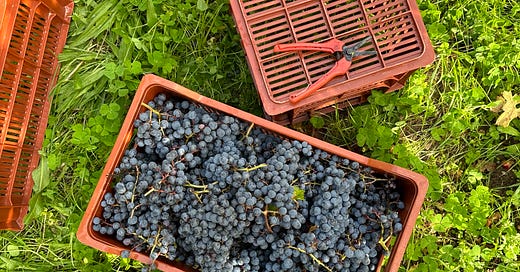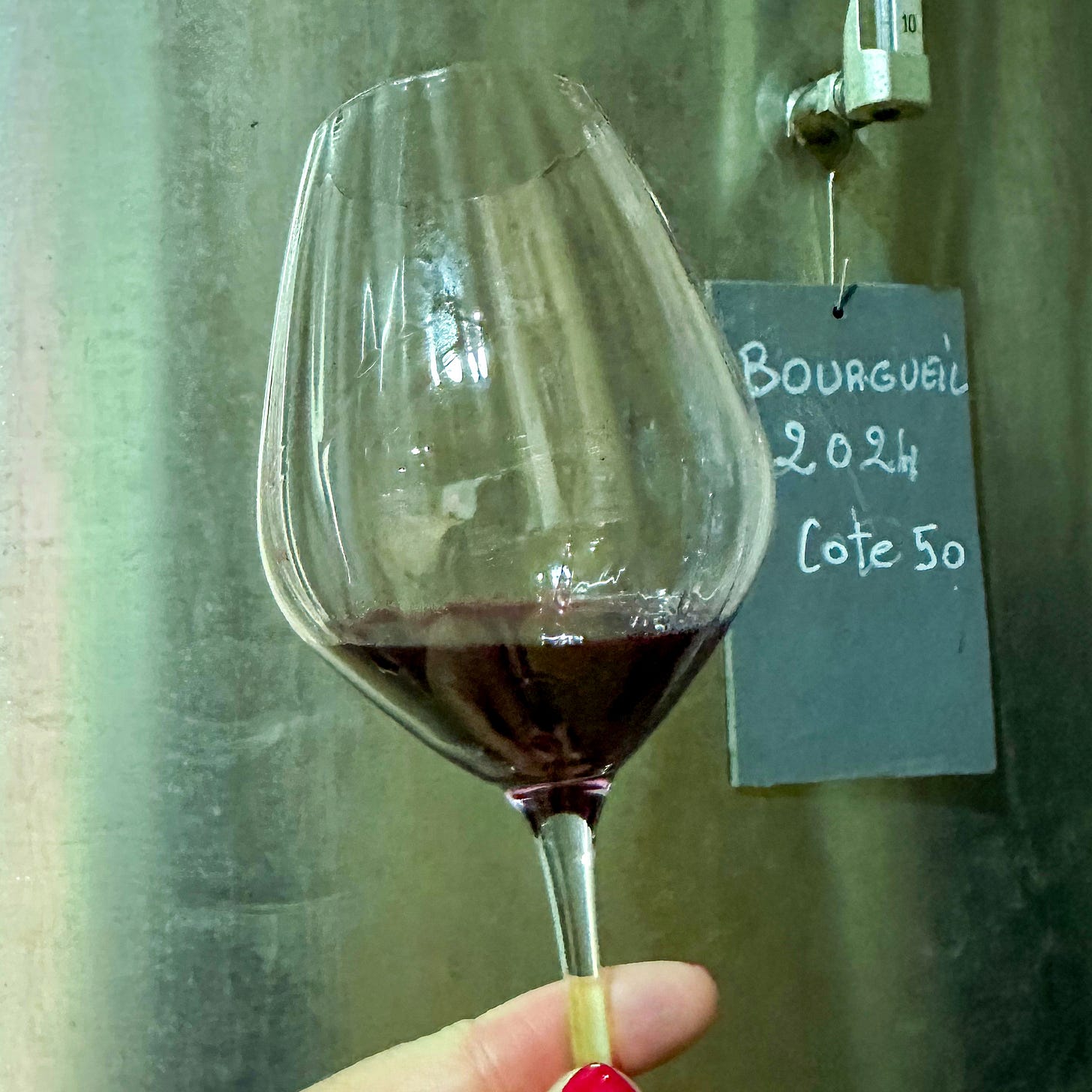This edition of my newsletter brings you the first annual Cab Franc Chronicles Global Vintage Report for Cabernet Franc. This has been a labour of love that I have been working on for several months now, and the report is intended to provide a snapshot of a grape, a region and a vintage - all in one place! As vintage reports never tell the whole story, in this report I have chosen to highlight the experiences of Cabernet Franc producers in key regions for the grape from all around the world. My objective was to understand how this humble grape fared in some of its most important regions, so that I am better equipped to share my insights on the wines when they are released - which, in some cases, will be many years away. For each region, I tried to identify a few key words that “summarize” the vintage based on the conversations I had with specific producers and other research I conducted on the vintage conditions and preliminary assessments of the wines. The report is long, but there was a lot to cover! If you don’t want to read it all, you can simply read about the regions that interest you the most. My deepest heartfelt thanks goes out to all the producers who helped contribute to this report, and I hope all of you find their experiences as insightful as I did. And as this is the first time for this report, your feedback is welcomed and encouraged, and you can comment below, send me a message, or email me your thoughts.
Southern Hemisphere
Uco Valley, Mendoza, Argentina - Balance and Ageability
The 2023/2024 growing season began with some complicated conditions in certain regions across the Uco Valley, including severe frost in San Pablo and strong wind events around flowering in the northern part of the Uco Valley, particularly in Gualtallary, both of which contributed to, on average, a 20% reduction in yield for Cabernet Franc. Conditions did improve through the summer, which was sunny and dry, with slightly warmer temperatures than average, but no major heat spikes or heat waves. Despite these warmer conditions and reduced yields, Sebastián Zuccardi noted that ripening was a little slower and acidities remained elevated leading up to harvest, which began about a week later than usual, with picking of Cabernet Franc beginning in Paraje Altamira and Gualtallary on March 18th and 19th respectively, and on April 3rd in the cooler region of San Pablo in the southern part of the Uco Valley. Sebastián remarked that the 2024 Cabernet Francs are showing "very good balance with a crisp acidity that gives freshness" with alcohols being a little higher than average because of the warmer conditions, but the fruit profile does not exhibit characteristics of a warm vintage. Moreover, thanks to the balance and elevated acidities, the wines are showing superb aging potential from across all major regions in the Uco Valley.
Colchagua and Cachapoal, Central Valley, Chile - Freshness, Tension and Elegance
Across Central Chile, a very rainy winter meant that the 2023/2024 growing season got off to a slow start due to higher than average water reserves in the soils. Ricardo Rivadeneira Hurtado of Viña Maquis in the Palmilla region of Colchagua noted that they recorded their highest rainfall in 20 years in 2023, which was concentrated in the late fall through early spring (May to September 2023). Cool and rainy conditions persisted through the spring in both Cachapoal and Colchagua, this impacted fruit set for Cabernet Franc, which is can be sensitive to weather during flowering and fruit set. Peak summer (January and February 2024) saw warm, sunny and dry conditions, which was followed by cooler than average temperatures leading up to harvest, which helped to slow down ripening and preserve acidities. Harvest began about one week later than average, with Viña La Rosa in Peumo, Cachapoal starting to pick their Cabernet Franc on March 18th and March 25th, while Viña Maquis began picking on March 27th, also about a week later than normal. Despite challenging conditions during the spring, yields were normal to a little higher than normal. With the cool conditions in the spring and early fall, the Cabernet Francs of the 2024 are marked by freshness and elegance, with La Rosa winemaker Gonzalo Carcamo adding that his Cabernet Francs are showing beautiful "tension and minerality" with lower alcohols.
Stellenbosch, Western Cape, South Africa - Purity, Balance, Concentration
Following the onset of above average rainfall towards the end of the 2023 harvest, the rainy conditions continued through the winter months, with above average rainfall being recorded in many sub-regions across Stellenbosch. Cool and wet conditions persisted into the spring, with several extreme wind events taking place in the early part of the season, though this did not appear to impact Cabernet Franc dramatically in terms of vine damage or budbreak, though there was spotty disruption of flowering and fruit set in some parts of the region. Despite the less than desirable start, summer brought with it warm, but not hot, daytime temperatures, cooler nights, no heat spikes, and very low rainfall – all told, picture perfect conditions leading up to harvest, though the low rainfall led to a reduction in yield by upwards of 25% in some areas. The earlier than average harvest for Cabernet Franc occurred under ideal conditions with beautifully pristine fruit being picked with very good phenolic development and higher natural acidities. Anton Malan of Rainbow’s End in the Banghoek ward in eastern Stellenbosch noted their 2024 Cabernet Francs are showing very good fruit expression with “great structure and concentration with low pHs - the wines will definitely age very well.” In western Stellenbosch in the Polkadraai Hills ward, which is an emerging region for quality Cabernet Franc, Bruwer Raats is equally optimistic about his 2024 Cabernet Francs calling 2024 an “icon” vintage on par with the likes of other great vintages including 2015, 2017 and 2021, with wines marked by “great purity of fruit and balance.”


North America
Napa Valley, North Coast, California, USA - Understated and Structured
The 2024 growing season got off to a strong start with the winter of 2023/2024 being mild and wetter than average, with about 70% of the year's average rainfall coming between December and March. The additional rainfall was welcomed and helped replenish the region's water reserves, and it also helped to accelerate the start of the season with budbreak for Lang & Reed's Cabernet Franc happening around mid-March, about a week ahead of average. Conditions remained moderate into the early summer and Cabernet Franc completed flowering head of an early June heat spike. A month later, another prolonged heat spike with temperatures in excess of 38C (100F) shut down the vines for a period of time, though thankfully this was at a time in the season when sugars had not begun to accumulate rapidly post-veraison. A welcome cool down came in August, which Lang & Reed founder John Skupny noted did slow down the rate of ripening and prolonged their initial harvest projections. But with no heat spikes in September, Lang & Reed coasted into harvest under fair skies and picked their Cabernet Franc between September 24th and October 2nd. The fruit came in at balanced ripeness levels, with bright acidity and beautiful intensity of fruit. With balanced freshness and moderate alcohols, John noted that his Cabernet Francs of 2024 will "show slightly more pronounced tannins early on but the flavour density is adequate enough that they should integrate nicely over time." A classic, perhaps understated, vintage for Cabernet Franc that will reward patience.
Livermore Valley, Central Coast, California, USA - Rich with Varietal Expressiveness and Balance
Through the 2023/2024 winter season, the Livermore Valley also benefited from the mild, wet conditions experienced across much of Northern California, and the temperate conditions continued through the spring with budbreak, flowering and fruit set taking place under ideal conditions setting Cabernet Franc up for what would be a very warm end to the growing season. July was warmer than average, with prolonged stretches of temperatures near 40C, and as the march towards harvest continued, Steven Kent Mirassou remarked that the 2024 summer/fall season was warmer, drier and windier than normal. The winds not only serve to cool down temperatures considerably, but Steven noted "the wind also shuts down vines earlier each day, limiting the number of active photosynthetic hours. So, our harvest season gets longer each year, on average." October arrived and brought with it another extreme heat wave with temperatures ranging from 35C to nearly 41C over a five day period between October 2 and October 6th, with some producers seeing a reduction in yield leading up to harvest due to dehydration of the berries. Steven Kent Winery picked their Cabernet Franc between October 4th and October 19th, working to pick in the wee early hours of the morning before the sun rose in order to ensure the fruit arrived as cool as possible to the crush pad. While still early, Steven remarked that he thinks his 2024 Cabernet Francs will be "stunning" noting a more classic "Livermore Valley" profile of "rose petal, dark cherry fruits and a velvety mouthfeel."
Walla Walla Valley, Washington, USA - Lively with Good Aging Potential
The 2024 vintage in Walla Walla Valley was "refreshingly normal" according to Master Sommelier and Master of Wine Doug Frost of Echolands Winery, who noted that nearly all climate markers came in close to the 20-year average. The winter of 2024 was marked by an extreme cold event mid-January impacting some growing regions in northwestern North America more severely that others, and Doug noted his Cabernet Franc vineyards did experience some bud death as temperatures dipped to -25C (-13F) on January 13th. A cool, wet spring, coupled with this extreme cold event in January, saw a slow, protracted budbreak period for Cabernet Franc, with primary buds opening on April 9th, and secondaries popping around 2 weeks later. Things began to improve by early June, with warm temperatures and average rainfall, and these favourable conditions continued through summer and into early fall. As the season progressed, the uneven budbreak meant extra work was required to green thin the Cabernet Franc clusters to ensure even ripening during the final weeks leading up to harvest. A welcome cool down in September provided perfect conditions later in the season for Cabernet Franc to ripen fully while retaining acidities and slowing down sugar accumulation, with the harvest of Cabernet Franc at Echolands taking place under sunny skies on September 23 and 24th. For their 2024 Cabernet Francs, Doug remarked that growing conditions allowed them to showcase "a spectrum of ripenesses and styles while still staying true to our mission of making fresh and lively Cabernet Francs." Across the board, cool conditions leading up to harvest that allowed for brighter acidities and more modest alcohols should see good aging potential for Walla Walla Cabernet Francs from 2024.
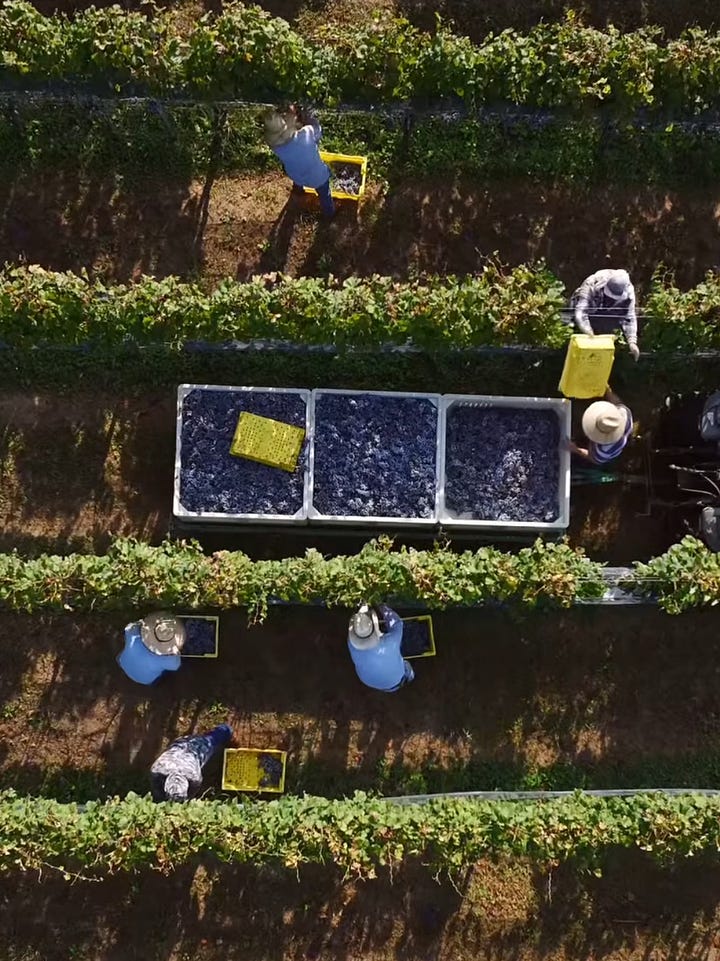

Virginia, USA - Structure, Freshness, Restraint
The winter conditions of 2023/2024 were milder than usual, which meant an even earlier start to the growing season in Virginia with budbreak occurring for Cabernet Franc the first week of April according to wine grower Robbie Corpora at Grace Estate in Monticello. As the early part of the season progressed, warmer conditions persisted with higher rainfall leading to rapid vine growth early on in the season, though well-timed dry periods came during flowering and fruit set, so potential yields looked promising going into the summer months. The warmer conditions persisted into the summer, and Early Mountain winemaker Maya Hood White remarked "we continued to experience very hot and dry days and significant diurnal shifts, allowing for high sugar accumulation and good acid retention, along with concentrated phenolics and aromatics." This very early and warm season came as a blessing in disguise. With the September forecast looking exceptionally wet, some made the decision to pick their Cabernet Franc before the excessive rains arrive mid-September and later Hurricane Helene towards the end of the month. Both Robbie and Maya noted all of their Cabernet Franc was picked before these significant rain events, and the fruit came in at very good physiological ripeness with slightly higher sugars. Robbie noted his 2024 Cabernet Francs are showing “restrained alcohol and good fresh acidity despite the warm, dry season with ripe but firm tannins.” If producers managed yields and picking times carefully, the resulting 2024 Cabernet Francs from Virginia show promise.
Long Island, New York, USA - Complexity, Concentration, Texture
According to veteran Long Island winemaker Rich Olsen-Harbich of Bedell Cellars, the 2024 growing season was "defined by unprecedented dryness, meticulous timing, and outstanding ripening conditions, setting the stage for wines of extraordinary quality." The season began a little cooler than average though still warm enough for buds to have swelled significantly when temperatures dipped to -2C (28F) on May 8th. The frost impacted some varieties worse than others, thankfully the impact to Cabernet Franc was minor with about 15% loss in potential yield. As the summer progressed, conditions were ideal for Cabernet Franc with warm but not hot temperatures, humid days, abundant sunshine, and occasional rainfall, all of which fostered vigorous canopy growth, which is desired at that time of the year. As veraison marked the final march towards harvest, conditions became picture perfect. Both September and October were marked by warm and sunny conditions, and unprecedented dryness - less than 4cm (1.5 inches) fell over the course of the two months. Cabernet Franc was able to ripen fully with extended hang time giving winemakers flexibility to pick at various ripeness levels to suit their desired wine styles. For Rich, the Cabernet Francs from Long Island from 2024 will be defined by their concentration, dark colour, ripe tannins, softer acidities, alongside rich textures and superb aromatics, adding that 2024 was "one of the most extraordinary vintages in [Long Island's] 51-year history."
Finger Lakes, New York, USA - Structured with Balanced Ripeness
On the heels of two, albeit very different, superb vintages for Cabernet Franc in the Finger Lakes, namely 2022 and 2023, the 2024 vintage began with great anticipation of another terrific year as budbreak arrived about two weeks earlier (around May 1) than average thanks to a winter that was more mild than normal. Though with an early budbreak comes the stress of watching the weather through the month of May, which can be unpredictable with risk of frost always being a possibility. Thankfully growers were spared as mild conditions persisting through May giving Cabernet Franc a two-week head start, which is always advantageous with the unpredictability that can come in the fall. The summer season was warmer than average, though no major heat spikes were experienced like in 2022 or 2020, with the right amount of rainfall at the right times, with the exception of excessive rains in August due to the remnants of Hurricane Debby, thankfully Cabernet Franc did not suffer any late season maladies as a result of the rains unlike some more sensitive varieties. The fall season was picture perfect, with temperate and dry conditions leading up to harvest, which took place between October 12 and October 20th for Boundary Breaks, with founder Bruce Murray remarking that Cabernet Franc was able to fully ripen thanks to the longer hang time afforded by the ideal growing season giving wines with “great fruit characteristics, tannic structure and colour.” According to Hermann J Wiemer winemaker Dillon Buckley, “Cabernet Franc proved itself again as the other star variety of the region” producing powerful, ripe wines with balanced freshness.
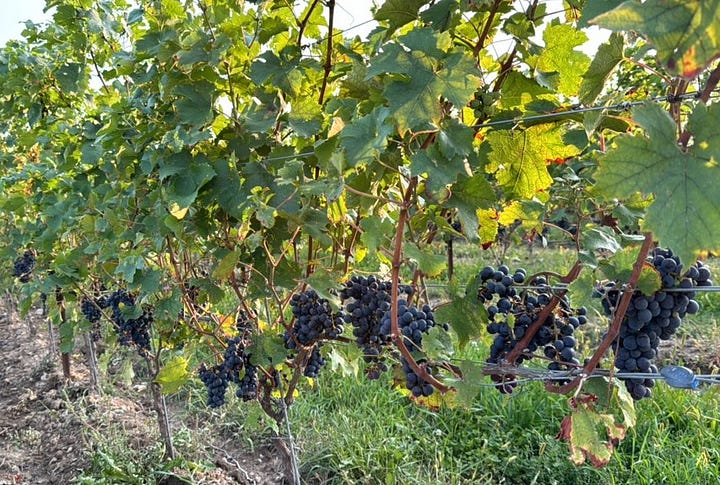
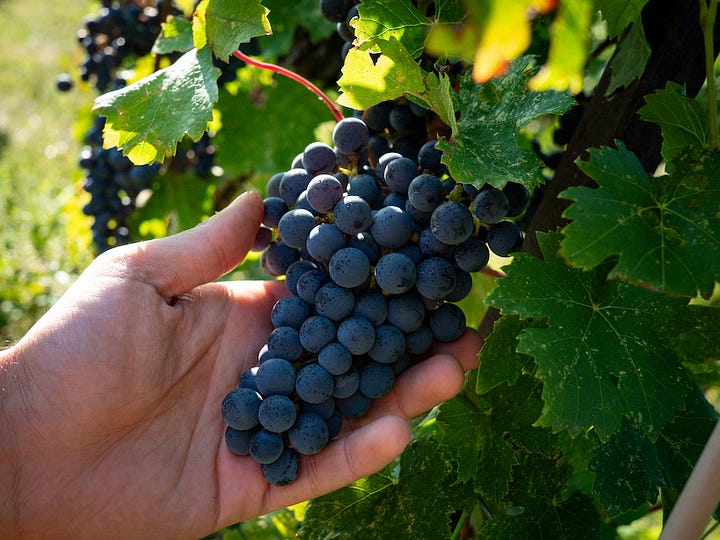
Niagara Peninsula, Ontario, Canada - Purity, Subtly and Seamlessness
At a time when the impacts of climate change are bringing more irregularity to the weather patterns and events across many wine growing regions, the 2024 vintage for Cabernet Franc in the Niagara Peninsula was "gloriously normal" according to Brian Schmidt, Vineland Estates winemaker of 33 years. The winter of 2023/2024 was one of the mildest in recent memory leaving many winemakers anxious as the mild conditions persisted into the early spring. While the conditions were mild, they still remained cool enough to not force an early budbreak, much to the relief of many. Budbreak came around the end of May or beginning of June, and conditions through the summer remained temperate, giving ideal conditions through flowering and fruit set, and even through veraison. These "gloriously normal" conditions continued into harvest with a calm and gradual transition into fall, which was sunny, dry, warm enough, but not too warm, giving ideal conditions for Cabernet Franc to ripen leading up to harvest. Harvest came right on schedule (mid to late October), and most Cabernet Franc was picked under fair skies and at a relaxed pace. Brian noted that early on his 2024 Cabernet Francs highlight the grape's most "virtuous" characteristics, with “focused acidity, demure herbaceous undertones,” tannins he described as being "gentle and seamless" and modest alcohols. Not a show-stopper vintage, but a vintage that will delight purists who appreciate subtly and ageability.
Europe
Villány, Pannon, Hungary - Fruit-foward, Plush, Concentrated
The 2024 vintage began with a milder than average winter in Hungary’s premier red wine growing region of Villány, which initially sparked fears of an early budbreak and a greater risk of losses if there was a late frost. However, the early spring was marked by slightly cooler and wetter than average conditions, so budbreak for Cabernet Franc arrived on schedule at the beginning of April. Conditions began to become increasingly warm and dry as summer approached, and the region had one of the warmest and driest summers in recent vintages. Several producers, including Pécsdevecser-based Weingut Wassmann, remarked that yields were down around 20-33% because of the lack of rainfall. Cabernet Franc harvest across Villány took place between September 1st and the third week of September, depending on the producer, with the majority of estate’s preferring to pick at higher ripeness levels. Early reports indicate that the 2024 vintage will be on par with the great 2000 vintage in terms of quality for reds, with higher ripeness levels but balanced acidities. Susann Wassmann remarked that though yields are small, they are very happy with the initial quality of their 2024 Cabernet Francs, which are “very charming” with intense fruit and beautiful varietal typicity.

Friuli Colli Orientali, Friuli-Venezia Giulia, Italy - Challenging… Further research required!
Characterized by extreme weather events throughout the growing season, 2024 was a challenging vintage across the Friuli Colli Orientali, particularly for later season red varieties like Cabernet Franc. It was the rainiest year on record, with the region receiving over 1300mm, mainly concentrated in May, September and October. The intense rain events in May disrupted flowering and fruit set for Cabernet Franc resulting in a reduction in yield. Conversely, the summer months were marked by extreme heat and low rainfall, with 68 days above 30C and 13 days above 35C according to the Consorzio Tutela Vini Friuli Colli Orientali e Ramandolo. While this was very good for accelerating the ripening of most varieties, intense rain events in September meant that the timing of harvest for Cabernet Franc was critical. Given the viticultural landscape across the region, it was a very heterogeneous vintage in terms of quality for Cabernet Franc. For some, grapes were picked at higher than average maturities with softer acidities but good phenolic development. For others, the outlook was not so favourable. Mario Zanusso, proprietor of Corno di Rosazzo-based iClivi who makes wine in both the Friuli Colli Orientali and Collio DOCs, noted that he chose not to make a Cabernet Franc in 2024 because of the uneven quality across his vineyards. Patience will be necessary to better assess the quality and character of the Cabernet Francs from the region as the wines are released in the months and years to come.
Bolgheri, Tuscany, Italy - Fresh, Focused and Finely Structured
The 2024 vintage was marked by alternating rainless and rainy periods according to Elia Campolmi of Le Macchiole in Bolgheri. The winter of 2023/2024 was mild and dry, and transitioned to a very wet spring with an entire season's worth of rain falling in the month of May. The rainfall, coupled with warmer temperatures, accelerated vine growth through May and into June, and following budbreak, the flowering and fruit set occurred quickly and under very good conditions predicting slightly higher yields for 2024 compared to other recent vintages. Following a very wet May, temperatures rose rapidly into the summer months, with very warm conditions and virtually no rain through the final and critical phasing of ripening leading up to harvest. September brought a welcomed cool down, which slowed sugar accumulation, and harvest of Cabernet Franc continued across much of Bolgheri through the first two weeks of September under mostly sunny skies and with periodic rains that didn’t appear to impact quality. Late September brought even more, and at times heavy, rainfall, but as Cabernet Franc is a relatively early ripening variety compared to Cabernet Sauvignon or Petit Verdot, most producers picked their Cabernet Franc ahead of these rain events. Despite the warm temperatures through the summer, the early September conditions allowed for Cabernet Franc to be picked with lively acidities and balanced ripeness. While it will likely be a several years before we see the release of many of region’s top wines, like Le Macchiole’s Paleo Rosso – Bolgheri’s first single varietal Cabernet Franc - Elia noted that in these early days, the Paleo Rosso is “fresh and decisive, vertical and juicy, with good acidity and a fine tannic structure.”
Bordeaux, France - Refined and Approachable
While Cabernet Franc still represents a very small part of the area under vine in Bordeaux (7.5% overall, 8.5% of red varieties), it is beginning to show its advantageousness and resilience, particularly in recent vintages as climate change is delivering diverse challenges with every vintage, whether it be very warm and dry conditions as seen in 2022, or the exact opposite as was experienced in 2024.1 This vintage was defined by very high amounts of rainfall across all of Bordeaux’s sub-regions, and this led to unprecedented mildew pressure that appeared as early as budbreak in some appellations. Neil Whyte, head winemaker at Jonathan Maltus’s Le Dôme in St-Emilion remarked that budbreak for their Cabernet Franc occurred on March 25th, and mildew was already popping up in select blocks on March 27th (normally, much more significant shoot and vegetative growth is when the onset of mildew typically occurs). The cool and wet conditions persisted as spring transitioned to summer, which not only intensified mildew pressure, but this also impacted flowering and fruit set, which was most problematic for Merlot.
Impacts from the cool, wet spring varied widely across regions and terroirs, and producers had to remain vigilant with their treatments throughout the growing season in order to preserve yields. Overall, yields for reds were down 20 to 30% as a result of mildew, coulure and/or millerandage, with Merlot carrying the brunt of these losses. Conditions did improve through July and August with warmer temperatures and limited rainfall, however the rains and cooler temperatures returned in September as harvest began. Cabernet Franc was harvested across much of Bordeaux in early October, in between two periods of heavier rainfall in late September and mid-October, which tended to adversely impact Merlot and Cabernet Sauvignon, respectively.
Cardan-based Paradise Rescued, one of the rare Bordeaux producers bottling single-varietal Cabernet Franc, opted to pick their Cabernet Franc on September 23rd ahead of the forecasted late September rains, and proprietor David Stannard remarked that the cooler early September conditions gave good phenolic development with lower sugars. He added that, while still early, their Cabernet Francs could be “exceptional” with low alcohols (12%), intense colour, vibrant acidity, and fresh, ripe flavours. The team at Le Dôme picked their Cabernet Franc between October 5th and 9th, and Neil noted they had good maturities from their grapes from both the limestone plateau parcels as well as their parcels on the upper alluvial terrace in St-Emilion, adding “it is a vintage without excessive ripeness, with wines that charm with their fruitiness and freshness… the great terroirs will produce fruity, refined, and easy-drinking wines.”
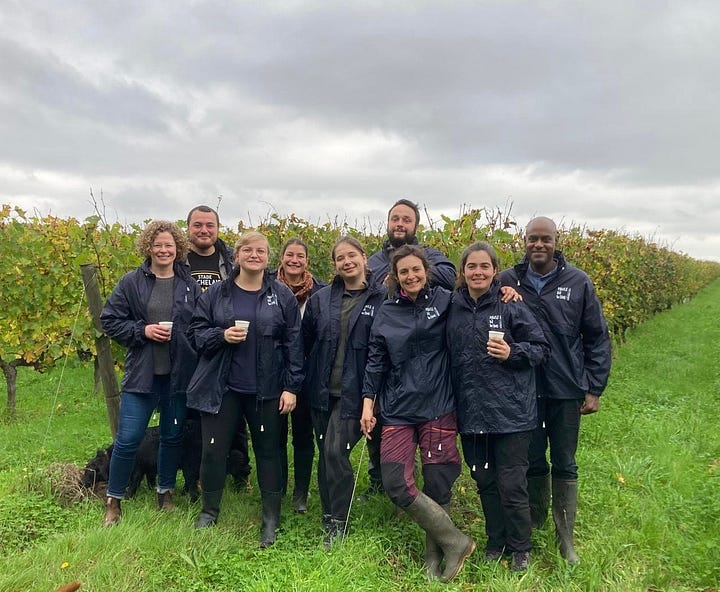

Loire Valley, France - Delicate, Aromatic, Ligérien
It has been said that the Loire Valley, in particular for Cabernet Franc, will be a benefactor of the impacts of climate change. Some twenty or thirty years ago, it was difficult to fully ripen Cabernet Franc in most vintages. But in recent years we have seen an unprecedented string of favourable vintages. Save for 2021 (according to some at least - I, for one, am a fan of this vintage), vintages 2017 through 2023 have all produced very good to excellent wines from across the diverse terroirs of the Loire. The 2024 vintage signalled the unpredictability that climate change has brought to regions around the world, and certainly was one that kept vignerons on their toes.
The vintage began innocently enough with a relatively mild winter and calm transition into spring with budbreak taking place slightly ahead of schedule. With the frost events that devastated many wine growing regions across France in mid- to late-April, the Cabernet Franc regions of the Central Loire came away relatively unscathed with minimal damage seen across the various appellations. With the risk of frost behind them, producers then were faced with record high rainfalls in May and June, which led to very high mildew pressure. This, coupled with disruptions in flowering and fruit set due to cool, wet conditions, yields were down by 25 to 40% depending on the village, vineyard and terroir.
July and August brought no respite from the rain and generally cooler than average conditions, and as summer transitioned into fall, and Cabernet Franc continued its slow march towards ripeness, it became apparent that Mother Nature was not going to cooperate. With the forecast showing more rain on the horizon for late September and early October, many vignerons made the advantageous decision to pick before a serious deterioration in quantity and quality occurred. Many vignerons across the Central Loire noted picking their Cabernet Franc at lower sugars and thus potential alcohols than previous vintages (10.5 to 12.5%), which inevitably led to some producers choosing to chaptalize to achieve better balance. Despite the lower potential alcohols, producers have reported the Cabernet Franc displayed very good phenolic development and low levels of pyrazines at harvest, with lively acidities that elevate the fruit and floral characters in the wines, with good, albeit delicate, tannin structures.
Chinon: There was variability in quantity and quality across Chinon’s communes and vineyards with parcels on the slopes generally faring better than some, but not all, on the alluvial terraces. Matthieu Baudry of Domaine Bernard Baudry remarked that he’s still not sure if he will bottle his Les Grézeaux for 2024 (a historic parcel for the domaine on the alluvial terrace), but was pleased with the quality of their Cabernet Franc from La Croix Boissée. He added that their Cabernet Francs overall are “fruity, quite colorful and structured, with alcohol levels between 11.5 and 12.5%, but without any greenness or aggressiveness.”
Bourgueil: Another appellation which saw some wider variability across the alluvial versus limestone terroirs, Benoît Amirault of Domaine Yannick Amirault articulated 2024 as having “the climate of the 1990s but with a very contemporary wine profile… with more precise ripeness than in previous years.” He noted that the wines from the alluvial terroirs show effortless fruit and “a delicate profile but with no thinness.” From the wines from the slopes, “quality of aging will be paramount… which will give another dimension to these terroirs, which often require more time to express themselves in cold vintages like 2024.”
St-Nicolas-de-Bourgueil: A challenging vintage that sparked concerns that Cabernet Franc would be harvested green and lacking in phenolic maturity. “Not so!,” exclaimed Xavier Amirault of Clos des Quarterons, “thanks to careful sorting.” He added “the wines will be low alcohol (11.5%), with a floral, delicate, elegant nose and a beautiful attack on the palate, medium-bodied and balanced without overpowering acidity.”
Saumur-Champigny/Saumur: A heterogeneous vintage across the region, with some producers choosing to declassify some wines, others made more rosé than usual, others saw no adverse impacts to quality. Arnaud Lambert noted “we had to respect the vintage and not try to create what nature did not create.” The wines are showing “remarkable aromatic complexity,” adding that he was able to “preserve the delicacy of Cabernet Franc” and he is “quite confident in the quality of the 2024 vintage.”
Anjou: Into western Anjou, where ripening Cabernet Franc has historically been more marginal on the region’s schistous soils, 2024 was an equally challenging vintage. Emmanuel Ogereau noted they chose to use “very short macerations to make light, fruity wines.” The cooler vintage did permit Domaine Ogereau to make a base wine of 70% Cabernet Franc for a blanc de noir traditional method sparkling for the first time, which Emmanuel expects to release in 2027.
By virtue of my two recent trips to the Loire (once in February and again in May), I have tasted several “near finished” and finished wines from different appellations across the Central Loire. The wines are fruit-forward, without any overt greenness, delicately floral and herbal, with soft tannins and vibrant, but not biting, acidities. I remain optimistic that despite the challenges of the 2024 vintage, we will see some very good wines from many of the region’s top producers. (I wrote a more in-depth early commentary on the Loire 2024 vintage last October after returning from the region, and this is available to read on my Substack.)
Closing Thoughts
As I noted in the preface of this report, vintage reports certainly don’t tell the whole story. And, as I’m sure many can attest, great wines and hidden gems can come from just about any terroir and any region, and in every vintage - even the more “challenging” ones. Some of my most memorable Loire Cabernet Francs, for example, have come from vintages that are less favourable “on paper,” but the tireless work of the vigneron and the quality of the vineyard resulted in delicious, enjoyable wines. Having done the legwork to learn more about these producers’ individual experiences, as well as further research on each region’s growing season, I am more enthusiastic than ever to taste and discover the 2024 Cabernet Francs from all of the above-mentioned regions and beyond. And with this enhanced understanding of what Mother Nature delivered to Cabernet Franc wine growers around the world in 2024, I look forward to sharing my impressions on the wines in the months, years and decades to come.
By virtue of Bordeaux’s illustrious history and reputation in the world of wine and their annual en primeur campaign, there is no shortage of reports on the 2024 vintage in Bordeaux on the internet. A quick Google search and you will find dozens of reports from critics and wine merchants alike, many of which I read to get a broader sense of the vintage. On Jancis Robinson’s website, I recommend reading Gavin Quinney’s excellent report. I also referred to reports from The Drinks Business’s Colin Hay on St-Emilion for the purposes of this report.


